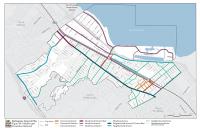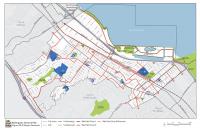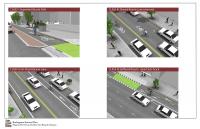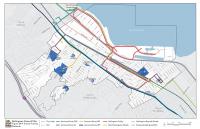Parking
A well-managed parking system achieves many objectives, such as fewer vehicles circulating on streets, easy access on foot from the car to one’s ultimate destination, and enhanced commerce. Commercial parking spaces should be easy to find, priced according to demand, and complemented by programs and features that facilitate getting to stores, restaurants, and places of employment. When an effective parking management system is in place, the experience of visiting popular areas within Burlingame is perceived as comfortable and convenient, and people are encouraged to return again and again.
Active parking management leads to multiple favorable outcomes by incentivizing sustainable habits that reduce the reliance on driving for every trip. These outcomes include reducing development costs, cultivating multimodal communities, improving public space design, and reducing impervious surfaces. When all aspects of parking management are appropriately applied, a smaller parking inventory may still provide a higher level of service to customers. The following goal and polices identify ways the City will more effectively and efficiently manage both public parking and private parking for individual development projects.
Goal: M-7
Use parking management strategies that promote parking availability, housing affordability, congestion management, and improved air quality.
Reduce or eliminate minimum parking requirements and/or implement parking maximums for housing, commercial, office, and other land uses in mixed use areas and in proximity to frequent transit services. Comprehensively examine parking requirements in the Zoning Code and adjust as needed to respond to evolving vehicle ownership patterns and parking practices.
Require that the design of parking lots and structures meets urban design objectives and minimizes negative impacts on people walking and biking, on transit users, and on the built environment. Where feasible, design parking structures to be adaptable to other uses in the future to accommodate potential changes in mobility and parking practices.
Promote and support creative approaches to parking, including but not limited to use of parking lifts and shared parking, particularly in mixed-use and retail areas. In Downtown and the Live/Work designation, include consideration of “unbundling” parking from residential development projects, whereby parking is provided as an amenity paid for separately from a lease.



